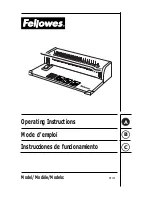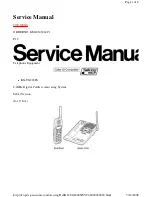
Service-Manual_artista_630_640_english_V4.01_032069_50_04.doc
18
Chapter 3
Functional check and diagnostic instructions
3.1 Functional check
A correct functional check must be carried out in order to make an error diagnosis.
1) Visual check:
Spool holder
Thread guiding parts
Needle in general, and needle position
Stitch plate
Feed-dog
Bobbin case
Hook, thread guide plate, bobbin case Retainer
Hook driver
2) Functional check:
Functioning of FHS presser foot lifter
Functioning of feed-dog drop
Functioning of presser foot pressure setting
Removal of bobbin case
Functioning of automatic (artista 640) and
manual thread cutter
Connecting machine with original cable and foot
control
LCD screen with backlighting
Functioning of sewing light
Functioning of left and right needle position
Functioning of stitch length and stitch width
Functioning of CLR button
Functioning of winder motor
Test-run the machine and listen for unusual
noises and noise level
Inspect main-, foot-control- and ribbon cables for
loose contacts and electrical resistance.
Drive check of stepping motors.
Inspect USB, embroidery module, PC and foot
control interfaces for connection capabilities.
Note machine’s operating hours, firmware
version and balance values in service program.
3) Mechanical checks:
Remove all covers.
Cleaning of mechanical parts
Check bevel gears for wear and tear
Checking of:
Main shaft play
Base shaft play
Thread take-up lever
Needle bar support
Feed-dog
Functioning of bobbin case hinge
Functioning of upper and lower thread tension.
Lubricate the machine.
4) Sewing checks:
Sewing-off using the following:
Functioning of the Quick reverse button
(securing stitches)
Straight stitch
Zigzag stitch
Honeycomb stitch
Automatic buttonhole stitch
Automatic darning
Embroidery module (if there is one) using the
test embroidery design
BSR foot (if available)
3.2 Diagnostic instructions
Powering the stepping motors
¾
In order to allow the stepping motors to operate correctly, it is essential that they are returned to
their "zero" position after each restart of the sewing computer or change of function. In order to
adjust this "zero" position, the stepping motors must be powered (under current). Replacement
motors should be adjusted before they are fitted into the machine. To achieve this, the motor must
be connected to the P-Print at the appropriate plug, which in turn must be connected to the S-
Print, and the S-Print to the power supply. Plug in the power cable, then select pinning positions in
the service program (SP 4e). This program powers the stepping motors to their correct current
values. The motors can then be adjusted according to the servicing instructions of the service
manual.
















































